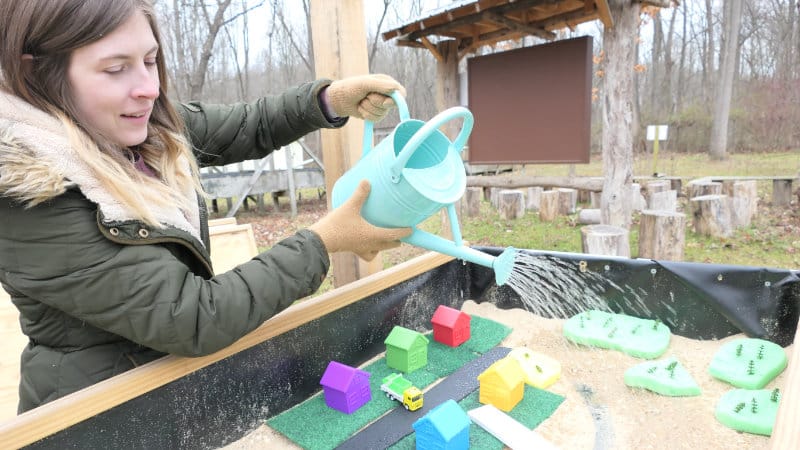Watershed Modeling Tables and Companion Lessons From the Stroud Center Help People Learn How Actions on Land Impact Streams and Rivers

By Steve Mohapp
When students or other groups visit Stroud Water Research Center this spring for an education program, they will engage with water in a new way by experimenting with newly created watershed models. The four models are located at one of the outdoor learning spaces near White Clay Creek. Each of the 8-foot-long models is filled with sand and can be adjusted to accommodate learners of different heights.
The Education Department created hands-on lessons that help meet Pennsylvania Standards for Science, Technology and Engineering, and Environmental Literacy and Sustainability (STEELS) and the multistate Next Generation Science Standards. These lessons explore how land uses affect streams and watersheds, and they help students design solutions to improve stormwater management.
During a lesson, students work in small teams to design their very own watershed. First, they move the sand around to create the hills, valleys, and stream channel. Students can open the spigot on a water container to make their stream flow.
Then, each team can place materials and items on their watershed that represent different land uses. Students can create whatever they’d like — a neighborhood park, their favorite restaurant, a horse farm, or a school. Each group is encouraged to create designs that are relevant to their own communities.
Once the watersheds are created, it’s time for a rainstorm. Each group uses watering cans to simulate a rainstorm throughout their watershed. During the storm, students observe how their land-use choices affect the movement of water and soil.

Students then design and create solutions to improve stormwater management in their watersheds. They may find that a riparian buffer along a stream, or a rain garden next to a school, will do the trick.
The whole group has time to discuss the effects of land use in their models and make connections to real-world watersheds and local communities.
The watershed model lesson can be incorporated into a watershed field study at the Stroud Center. Learn more or request a program.



